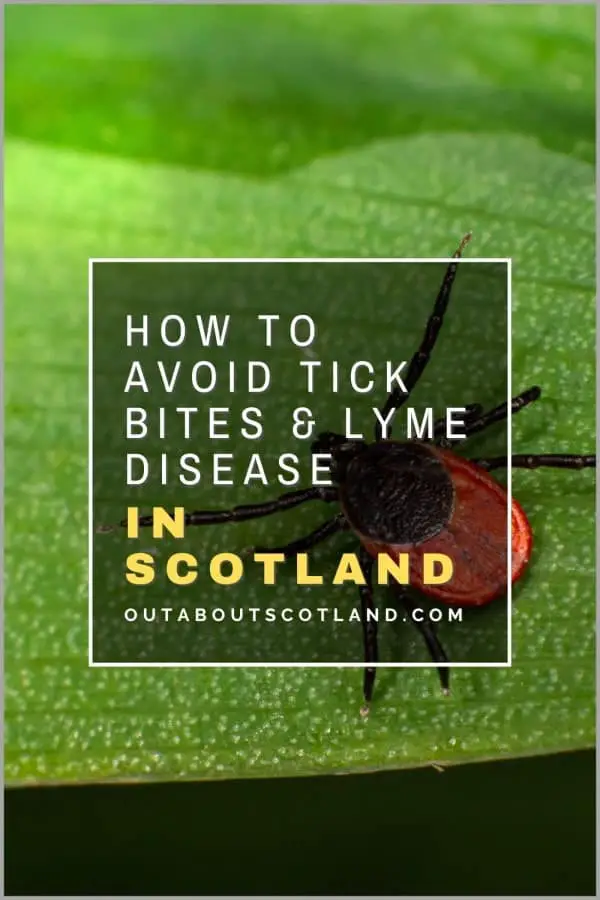Ticks are small, 8-legged parasitic insects that live throughout Scotland. They have 4 stages in their life cycle, each of which requires a blood meal, which they get by gorging themselves on any host they find, whether animals or humans.
Although tick bites are painless, they can pass on Lyme disease, which can be dangerous if not treated. Symptoms include a fever, severe headaches, confusion, and nerve pain. Discover where ticks live, how to avoid them, and how to remove them in this complete guide to tick bites and Lyme disease in Scotland.
What Is a Tick?
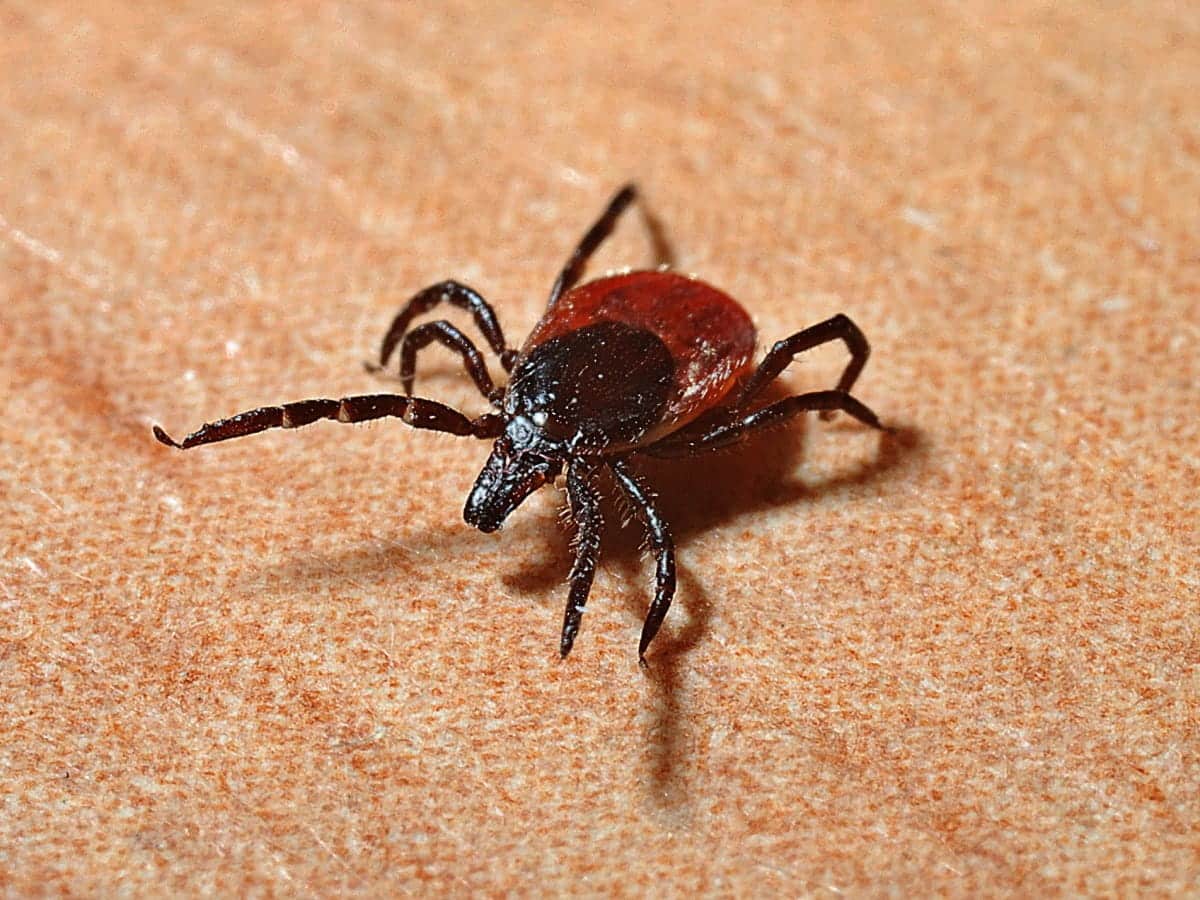
While ticks are fairly common in Scotland the chances of getting bitten by one are fairly low if simple precautions are taken, meaning they’re arguably less of a problem than the infamous Scottish midge. These tiny insects are part of the arachnid family, so they have 8 legs, but unlike spiders, they’re parasitic and survive by directly feeding off other animals by feasting on the blood of mammals and birds.
Hardy and adaptable, they are one of the world’s oldest insects, and some fossilised remains have been dated to over 100 million years in age, although they have barely changed since the Cretaceous period. They now live on pretty much every continent on earth, but they are most prevalent in countries where it’s mild and wet (so they love Scotland).
Here in the UK, we have at least 20 species of tick but the most common is the sheep tick (Ixodes ricinus) which carries diseases that affect livestock as well as the much-feared Lyme disease which also affects humans.
Ticks are usually harmless, but if the insect is infected with Lyme disease (explained below), they will pass it on to any animal they bite. The reason why ticks feed on their hosts is that they need fresh supplies of blood to grow through each stage of their lifecycle—from egg to larva, nymph, and adult—and they will attach themselves to any nearby animal by detecting its odour, heat, and moisture.
A common misconception is that ticks will jump onto animals, but in fact, they are unable to jump at all. What to do instead is cling to leaves and grasses with their large front legs outstretched.
When an animal brushes against them the tick will cling onto it and crawl through the fur to get to the skin underneath, at which point they sink their mouthparts into the skin while excreting an anticoagulant to prevent the wound from healing over. If left alone a tick will continue to gorge itself for up to two weeks, after which it will withdraw its mouth and detach itself from its host.
Protect Your Family From Scotland's Biting Midges
- Powerful, reliable protection for up to 8 hours
- Water- and sweat resistant
- Repels midges, mosquitoes, horse flies, sand flies, fleas and ticks
- Safe for use on adults, children over 30 months and pregnant women
- Non-sticky, moisturising with a pleasant fragrance
- Packaging may vary
What Do Ticks Look Like?
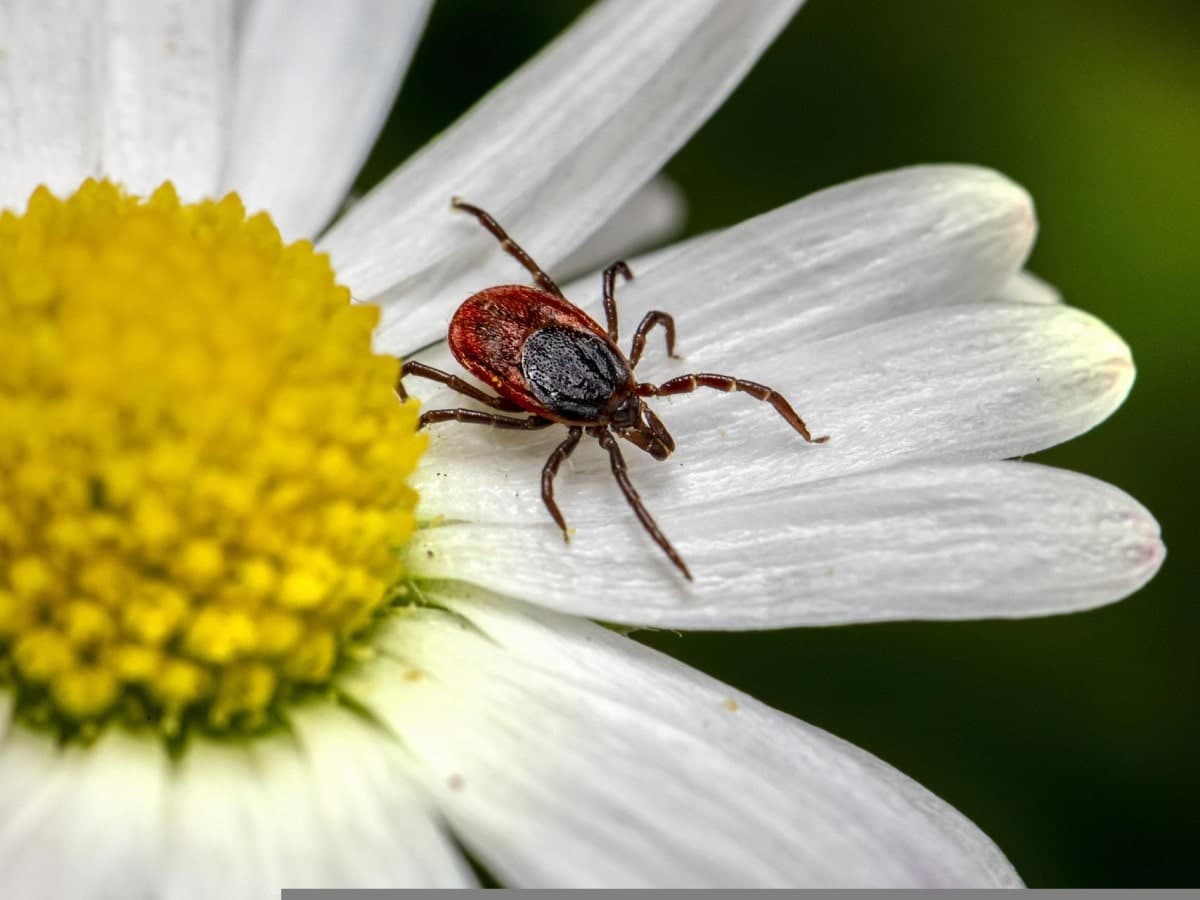
Generally, ticks in Scotland are between 3 and 5mm in size but this can vary wildly depending on their age. Ticks are tiny insects with oval bodies and legs that have hooks on the ends to allow them to cling to their prey. The front two legs are slightly longer than the others, and their mouthparts protrude in front of their heads to allow them to bite deep into fleshy skin.
At first glance, they may appear to look like tiny spiders (although their legs are much smaller in proportion to a spider), and young ticks (categorised as being in the larva or nymph stages) are so small they’re difficult to see as they’re only around the size of a poppy seed.
Colour-wise, they vary from reddish-brown to black but if left to feed for a day or more they will swell up to the size of a coffee bean and change colour to light brown or blue-green. Due to their size, the only time you will see them is when they have already started feeding, when their heads will appear to be buried into the skin, leaving their bodies sticking out.
The bite isn’t usually noticeable so the first indication that you have been bitten will be a small, hard brown/black spot attached to the skin. The most common areas are on the feet and between toes, between legs and behind knees, under arms, inside the belly button, around the waist and back, and on the neck and in the ears.
Where Do Ticks Live in Scotland?

As mentioned above, ticks like to live in wet conditions and that’s something we have a lot of here in Scotland. Ticks are most prevalent on the west coast but they can be found all over Scotland from the Borders to the North Highlands.
Because ticks find their prey by clinging onto animals as they brush past, the most likely places to find them are long grasses and moorland. They’re also found in woodland where there are carpets of leaf matter as well as anywhere there are ferns and heather. You’ll even find them on clifftops where one particular species feeds almost entirely on seagulls.
When Is Tick Season in Scotland?
Ticks can be found throughout the year but they are most active between March and October. Their numbers have been known to increase during particularly humid weather and decrease during extremes of heat or rainfall.
Studies have shown that ticks are almost entirely inactive in cold weather and will only start looking for a fresh host when the temperature rises above 7°C. Sadly there’s no updated forecast map like there is with midges (see the Smidge map for the latest Scottish midge forecast) so a general awareness of the area you’re visiting is the best way to avoid them.
Book Tours in Scotland
What Is Lyme Disease?
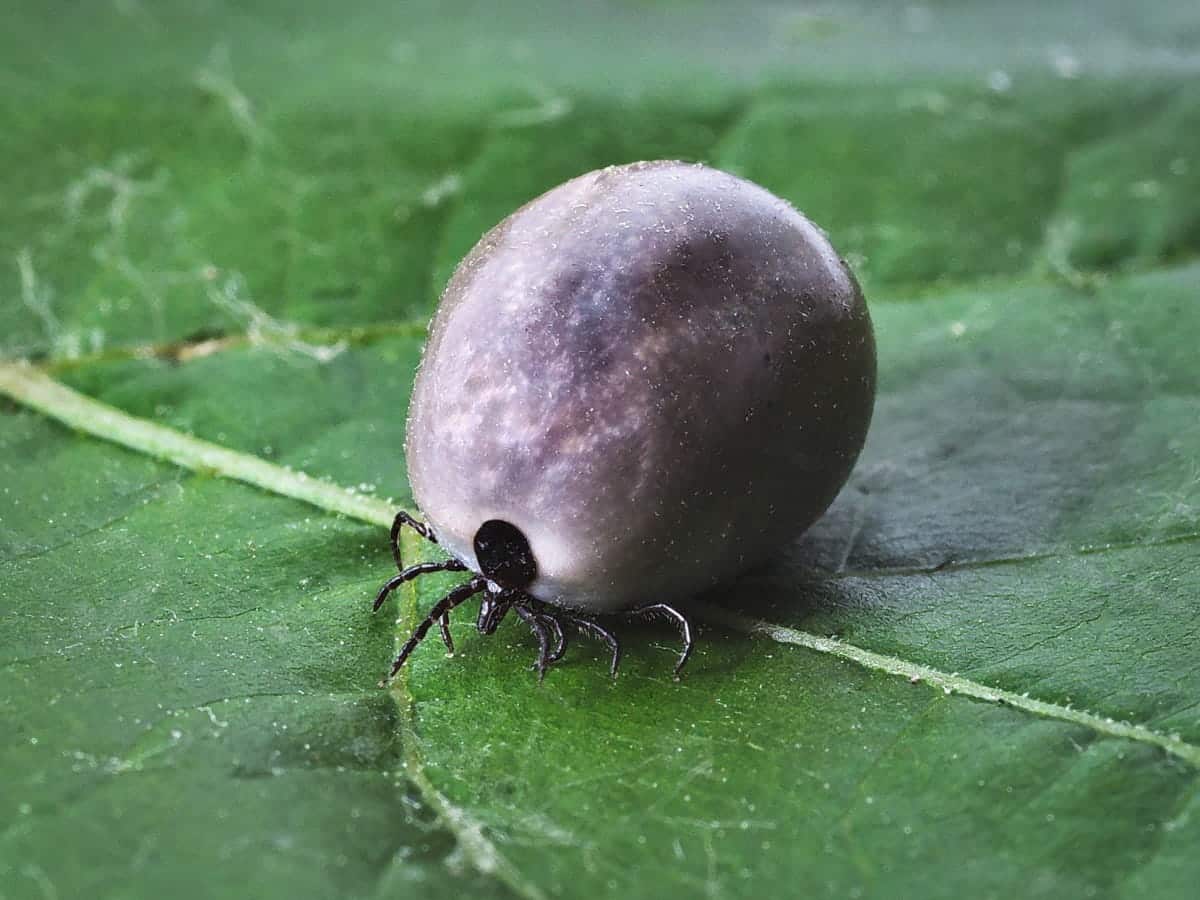
Lyme disease (also known as Lyme borreliosis) is a bacterial infection that can produce symptoms that last from a few days to several years. Similar to how infected mosquitoes transmit malaria, the disease primarily infects humans through infected ticks. As the tick bites into an infected animal, it absorbs the disease and then passes it onto the next animal it feeds
The bacteria – Borrelia burgdorferi – starts acting between 3 and 30 days from the time the animal (or human) is bitten, after which time the Lyme disease symptoms will develop.
Initially, the infected person will have a red rash around the bite mark which can feel warm and is often raised at the edges. This rash is quite obvious as it will spread out from the bite in a circular pattern and will often look like the bullseye on a dartboard with a small red ring around the bite and another larger ring an inch or two from the centre.
Most often the rash is not painful or itchy and can be treated with antibiotics but it is advisable to speak to a medical professional if a rash becomes visible.
What Happens if Lyme Disease Isn’t Treated?
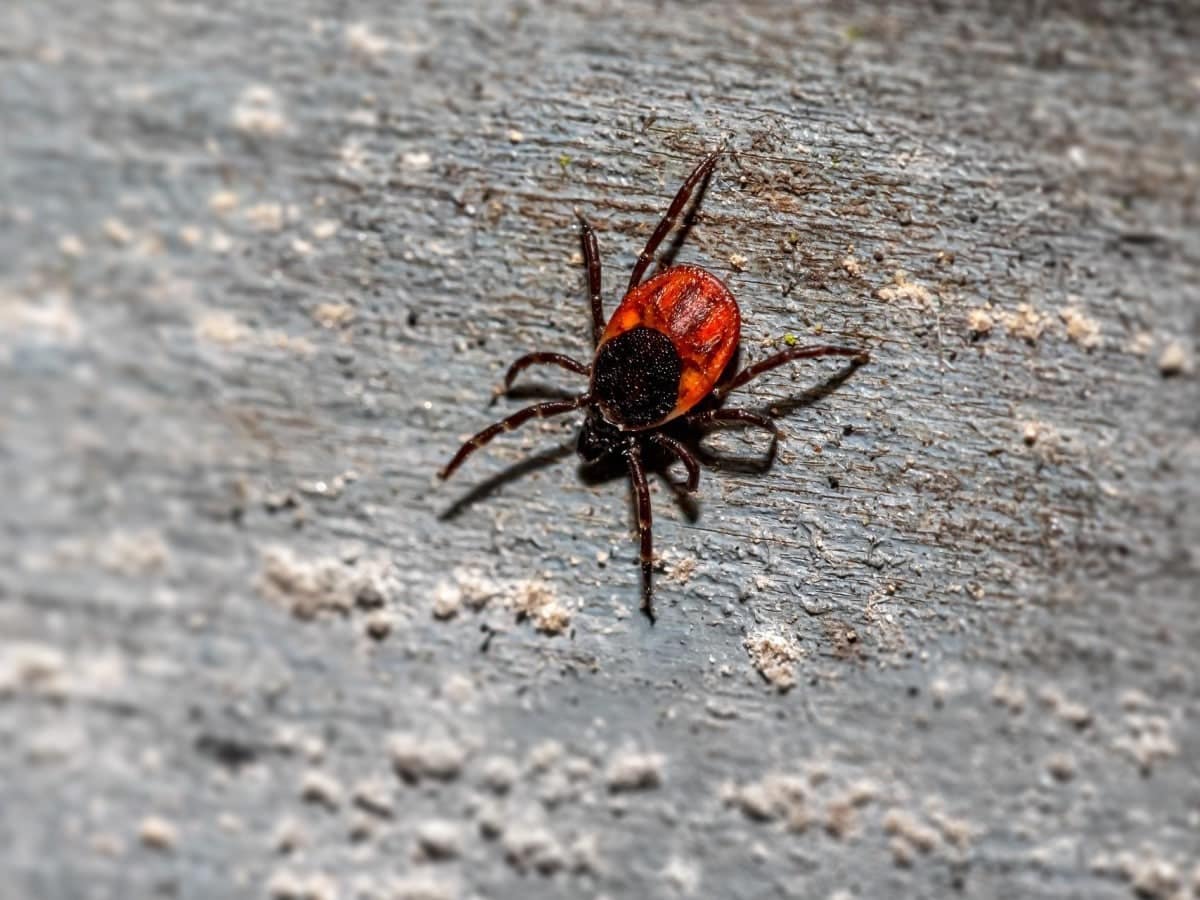
If treatment is delayed, then some people will develop further symptoms, including a temperature, headache, tiredness, and joint pain similar to the effects of the flu. The time to worry about a tick bite is when the infection isn’t treated at all, as it can progress to the heart and nervous system, which can then lead to heart palpitations, dizziness, nerve pain, facial palsy, and severe headaches.
Lyme disease can cause serious health problems, but it should be noted that not all ticks carry the disease. If you’re in any way concerned about any tick bite, you should speak to your GP, and in the meantime, take a look at the NHS Lyme disease page for further information.
Lyme disease prevention after tick bites is usually possible with a course of antibiotics (doxycycline) which are taken for up to 28 days after the initial bite.
Other Tick-Borne Diseases
Although ticks in Scotland are most frequently associated with Lyme disease, they can also spread a variety of other diseases, the majority of which only affect livestock. However, ticks can, in rare cases, pass on other diseases to humans, including Ehrlichiosis, Babesiosis, and Bartonella. These bacterial diseases can affect the central nervous system and cause symptoms like fever, headaches, vomiting, and a rash.
Again, if you suffer any of these symptoms after a tick bite seek medical advice as soon as possible.
How to Avoid Tick Bites

While ticks are unpleasant wee creatures and the diseases they carry are even worse, they aren’t too much cause for concern if a few simple precautions are taken while walking or camping in Scotland. The main defence against getting bitten is knowing when and where they live, which is generally from March to October in damp areas including woodland, long grass, and patches of heather and fern.
If you’re wondering how to avoid ticks in the woods and grasslands of Scotland be aware that most tick-infested areas have warning signs in public places so keep an eye open for signs at car parks and visitor centres before setting off on foot. If you decide to go for a walk, try to keep to paths and avoid long grass as much as possible and wear clothing that will prevent ticks from reaching your skin in the first place.
How to Prevent Ticks on Humans Naturally
While hiking shorts are comfortable, if you’re heading into an area with a tick warning it’s a good idea to wear trousers instead and tuck the trouser bottoms into your socks. With regard to shirts, try to wear long-sleeved shirts as much as possible, but if you insist on wearing short sleeves, then check the arms of yourself and your family regularly for signs of ticks.
My personal recommendation for clothing to protect against ticks is convertible trousers and polyester long-sleeve shirts. The trousers have removable zipped lower legs that can be removed and reattached when entering and exiting tick areas, and the shirts are cool and breathable with lightweight arms that can be easily rolled up and down.
They’re also great items of clothing to wear in areas with midges which in my opinion are a greater concern for hikers than ticks.
Protect Your Family From Scotland's Biting Midges
- Powerful, reliable protection for up to 8 hours
- Water- and sweat resistant
- Repels midges, mosquitoes, horse flies, sand flies, fleas and ticks
- Safe for use on adults, children over 30 months and pregnant women
- Non-sticky, moisturising with a pleasant fragrance
- Packaging may vary
The Best Tick Repellents
As well as covering your body so ticks can’t get to your skin, it’s a good idea to cover yourself in an insect repellent that blocks their ability to find you. Ticks find new hosts by detecting carbon dioxide and lactic acid in the air, which they pick up from special receptors in their front legs. These receptors,called Haller’s organs,can be blocked with certain synthetic chemicals that are sprayed onto the body via an aerosol or rubbed into the skin as a lotion.
The most common insect repellents either contain DEET or picaridin, both of which are most effective in concentrations over 20%. This number is normally displayed on the packaging, so check the concentration level before making a purchase.
Of the two chemicals, DEET is considered the most effective at deterring insects but it’s also the most harmful to the skin and can cause skin irritation in some people, especially children. It’s therefore recommended not to purchase an insect repellent with more than 30% DEET.
One popular British insect repellent is Smidge which not only repels midges (hence the name) but is also effective at deterring ticks. This is the repellent I personally use, and I can confirm it works wonders. Not only is Smidge DEET-free, but it’s also alcohol-free, water-resistant, non-greasy, and lasts for up to 8 hours. It even smells nice, which is something you’ll appreciate if you’ve ever covered yourself with DEET.
What to Eat to Prevent Tick Bites
Several natural remedies help prevent ticks including spraying yourself with lemon, orange, cinnamon, lavender, peppermint, and rose geranium essential oils. They also hate eucalyptus oil and cedar oil.
However, if you’d rather not cover yourself with those scents, there have been studies that show that regularly eating garlic can reduce the likelihood of getting tick bites. The reason for this is that when you eat garlic, your body secretes small amounts of it, which ticks hate, although your partner might hate it too.
Other foods that are rumoured to deter ticks are onions, tuna, tomatoes, sunflower seeds and asparagus. The jury’s currently still out on how effective these foods are as tick deterrents.
How to Remove Ticks
First things first,pay no attention to the old wives’ tales that say to cover the tick in Vaseline or burn it with a match. These treatments rarely work and only prolong the amount of time the tick is attached. The goal here is to remove the parasite as quickly as possible, not wait until it removes itself.
The best way to remove a tick is to pull it out with thin tweezers or a tick tool.
Tick tools are the best option as they ensure the tick isn’t crushed and is pulled out in a clean motion, otherwise the mouth parts can break off and stay embedded in the skin. If the mouth is left behind, try to pull it out with tweezers, otherwise clean the area with antiseptic cream and let the skin purge it naturally.
When using a tick tool, approach the tick side-on and slide it between the grooved fingers of the tool, then lightly give it a couple of turns, after which the tick will harmlessly detach. If using a flat card tick tool, don’t twist it. Instead, prise the tick out by levering it up in a fluid motion.
If using tweezers make sure you have a narrow pointed pair. Square-ended eyebrow tweezers will not get sufficiently close to the mouthparts of the tick.
Grasp the tick as close to the skin as possible underneath the body and in a steady motion pull upwards. Ensure you don’t twist the tick or move the tweezers in a jerky motion as this can cause the mouth parts to detach and stay embedded in the skin. Once the tick is removed, clean the infected area with soap and water and cover it with a.. Finally, dispose of the tick either by immersing it in rubbing alcohol and sealing it in a bag or flushing it down the toilet.
Book Tours in Scotland
Signs Your Dog Has a Tick
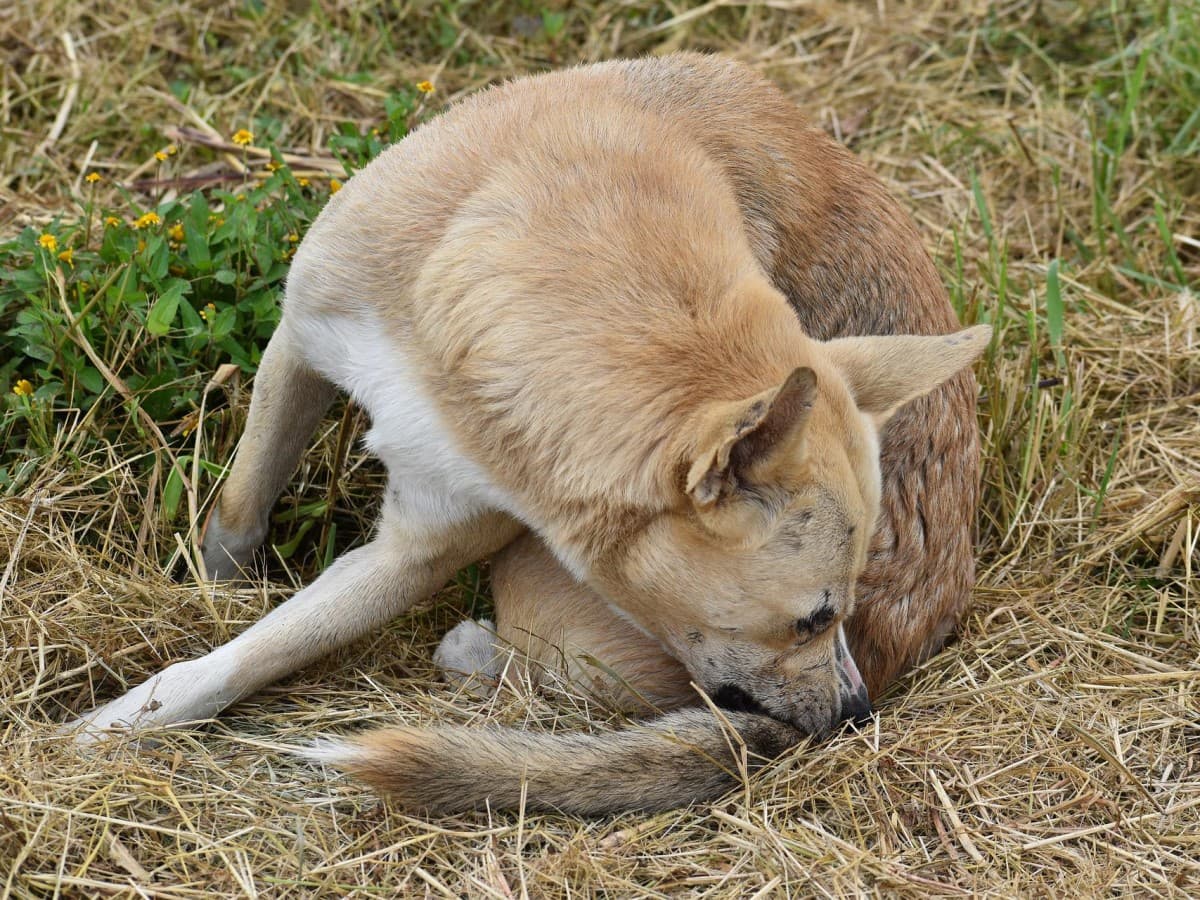
If you’re exploring Scotland with your dog, it’s just as important to check them for signs of tick bites as it is for the rest of your family. Even though ticks aren’t painful when attached, they’re not particularly pleasant to look at, and they can pass on diseases if left in place for too long.
Once a tick starts feeding, your dog won’t show any obvious signs, and as they’re so small, you won’t be able to see them, so after visiting anywhere there could be ticks, it’s important to check your pet by feeling their coat.
Run your hands over their body and try to feel for any small bumps. If you do feel a bump, part the fur and take a close look to see if it’s a tick. If it is, it can be removed with the same tools and using the same method as described above when removing a tick from a human.
Give your pet another check a day later, as by this time any that were missed will have engorged themselves and will therefore be much larger. Check all areas that are hairless, as ticks usually crawl there once attached to an animal’s coat. Prime tick areas are the head, ears, neck, under the legs, around the groin, and on the feet.
While your dog won’t tell you they have a tick, there are a couple of signs to look for after a few days, including skin infections with swollen red patches under the fur. Be aware that your pet may display unusual symptoms up to a month later, which could indicate Lyme disease. Symptoms of Lyme disease in an animal include lethargy, a loss of appetite, fever, and swollen lymph nodes. If you notice any of these symptoms and have any doubts, consult your vet for advice.
Frequently Asked Questions
Do ticks give multiple bites?
Ticks do not give multiple bites. Instead, they burrow their heads into the skin and feed off the blood supply until they are engorged. They only feed off one location and therefore give one bite.
Feeding can take up to two weeks if left untreated. The tick will then naturally detach itself and progress to the next stage of its life cycle.
What time of day are ticks most active?
The time of day when ticks are most active depends on the weather. Although ticks can be found throughout the year they become most active between March and October when the average temperature is above 7°, and during the day when it’s warmest.
Some studies have shown that ticks are most active from around 6 am to midday, but the fact they are found on animals that are active at night and during the day suggests that ticks will look for hosts at any time.
How do you avoid ticks getting on you?
The best way to avoid getting ticks on you is to stay away from areas where they live i.e. long grasses, woodlands, and heathland. In addition, wear long-sleeve shirts and long trousers with the legs tucked into socks.
As far as insect repellents go, the best ones contain DEET, Picaridin, or oil of lemon eucalyptus. Choose a repellent that has at least 20% of one of those active ingredients but no higher than 30%. This is particularly important with DEET which can cause skin irritation above 30% concentration.
How long do ticks stay on you?
Ticks can stay attached for up to two weeks while they feed on a blood supply. Most people will notice and remove them long before that, but they might not be noticeable on animals.
Once fully fed, the tick will remove itself from the host and drop off on its own so it’s important to regularly check your pet for ticks otherwise you may find them in your house.
Protect Your Family From Scotland's Biting Midges
- Powerful, reliable protection for up to 8 hours
- Water- and sweat resistant
- Repels midges, mosquitoes, horse flies, sand flies, fleas and ticks
- Safe for use on adults, children over 30 months and pregnant women
- Non-sticky, moisturising with a pleasant fragrance
- Packaging may vary













